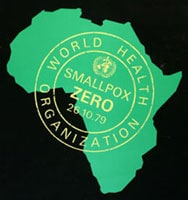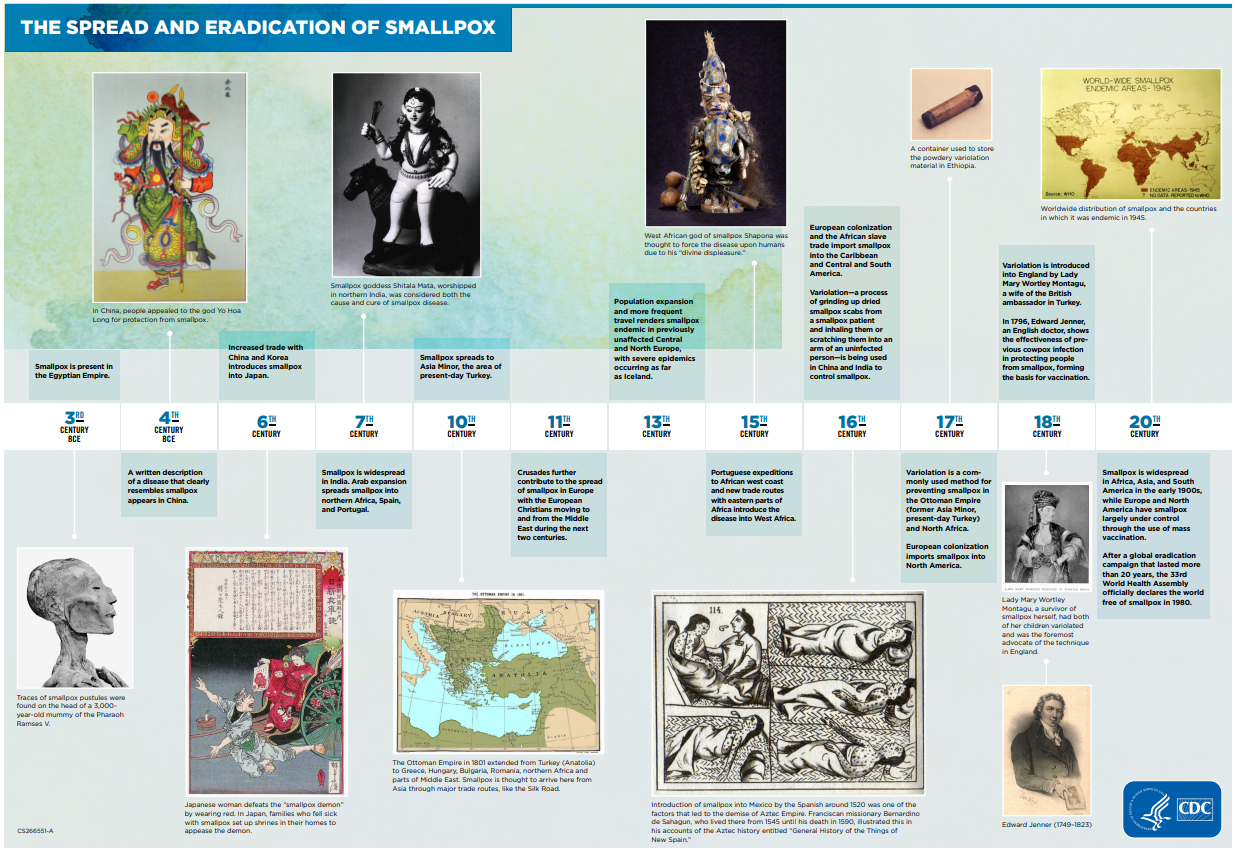About
- Smallpox began causing illness and death more than a thousand years ago.
- Follow its spread and eventual eradication in the timeline below.
Smallpox timeline
3rd century BC
Smallpox is present in the Egyptian Empire
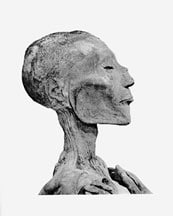
G. Elliot Smith, Public Domain
4th century
A written description of a disease that clearly resembles smallpox appears in China

Image taken from Recherche sur les Superstitions en Chine (Research on Chinese Superstitions) by Henri Dore, Shanghai, 1911-1920. Bibliotheque nationale de France.
6th century
Increased trade with China and Korea introduces smallpox into Japan.
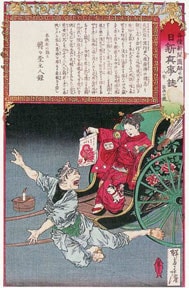
By Sensai Eitaku (鮮斎永濯, Japanese, *1843, †1890) – scanned from ISBN 978-4-309-76096-4., Public Domain]
7th century
Smallpox is widespread in India. Arab expansion spreads smallpox into northern Africa, Spain, and Portugal.

Photo courtesy of the National Library of Medicine.
10th century
Smallpox spreads to Asia Minor, the area of present-day Turkey.
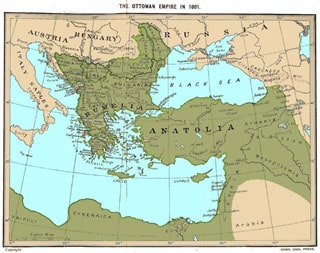
11th century
Entrance into Europe
Crusades further contribute to the spread of smallpox in Europe with the European Christians moving to and from the Middle East during the next two centuries.
13th century
Smallpox moves north
Population expansion and more frequent travel renders smallpox endemic in previously unaffected Central and North Europe, with severe epidemics occurring as far as Iceland.
15th century
Smallpox is widespread in many European countries, and Portuguese expeditions to African west coast and new trade routes with eastern parts of Africa introduce the disease into West Africa.

CDC, photo credit James Gathany
16th century
European colonization and the African slave trade import smallpox into the Caribbean and Central and South America.
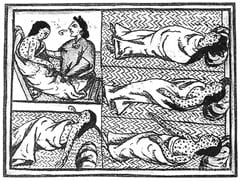
Scanned from (2009) Viruses, Plagues, and History: Past, Present and Future, Oxford University Press, USA, p. 60. Public Domain.
Variolation—a process of grinding up dried smallpox scabs from a smallpox patient and inhaling them or scratching them into an arm of an uninfected person—is being used in China (inhalation technique) and India (cutaneous technique) to control smallpox.
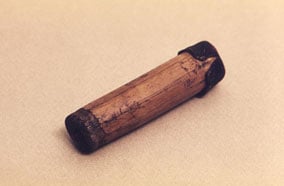
CDC, photo credit Brian Holloway
17th century
Increased use of variolation
Variolation (cutaneous technique) is a widespread method for preventing smallpox in the Ottoman Empire (former Asia Minor, present-day Turkey) and North Africa.
Smallpox spreads into North America
European colonization imports smallpox into North America.
18th century
Variolation is introduced into England by Lady Mary Wortley Montagu, the wife of the British ambassador to Turkey.
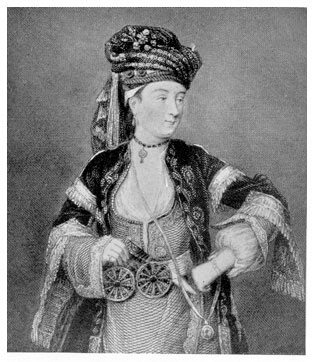
In 1796, Edward Jenner, an English doctor, shows the effectiveness of previous cowpox infection in protecting people from smallpox, forming the basis for vaccination.
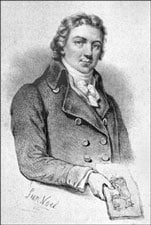
20th century
Smallpox is widespread in Africa, Asia, and South America in the early 1900s, while Europe and North America have smallpox largely under control through the use of mass vaccination.
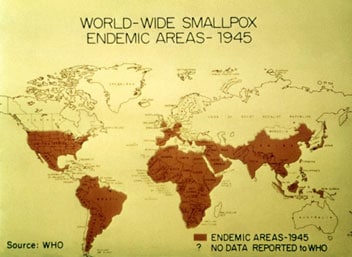
CDC, photo credit Dr. Michael Schwartz
After a global eradication campaign that lasted more than 20 years, the 33rd World Health Assembly declares the world free of smallpox in 1980.
